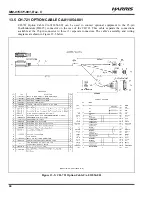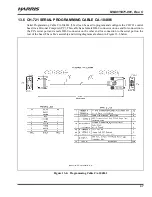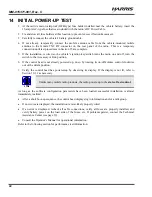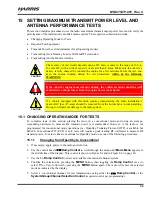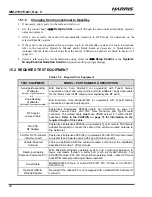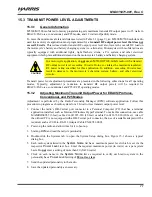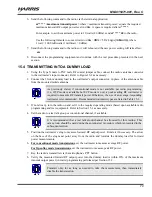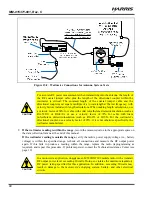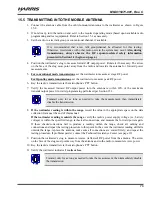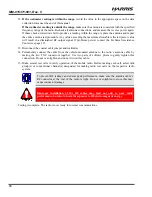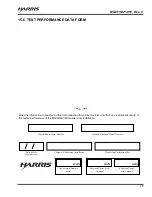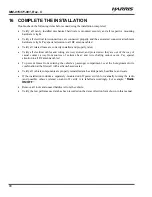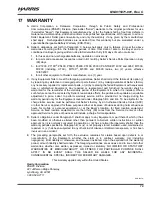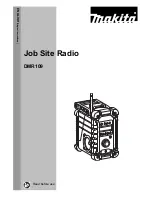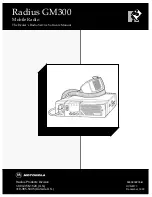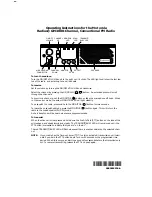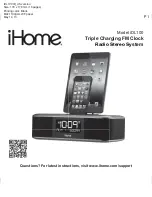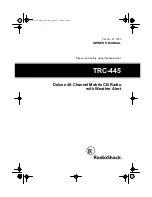
MM-015371-001, Rev. C
74
Figure 15-2
:
Wattmeter Connections for Antenna System Tests
CAUTION
For accurate RF power measurements when transmitting into the antenna, the length of
the RF coaxial jumper cable plus the length of the directional coupler within the
wattmeter is critical. The summed length of the coaxial jumper cable and the
directional coupler must equal a multiple of a ½-wavelength at the test frequency, with
velocity factors included in length calculations. When making length calculations, use
a velocity factor of 66% for cable with solid polyethylene dielectric/insulation (such as
RG-58C/U or RG-8/U), or use a velocity factor of 79% for cable with foam
polyethylene dielectric/insulation (such as RG-233 or H155). For the wattmeter’s
directional coupler, use a velocity factor of 95%, if it is not otherwise specified by the
wattmeter manufacturer.
9.
If the wattmeter reading is within the range,
record the measured value in the appropriate space on
the data collection form near the end of this manual.
If the wattmeter reading is outside the range,
verify the radio’s power supply voltage (i.e., battery
voltage) is within the specified range, recheck all connections and measure the RF output power
again. If this fails to produce a reading within the range, replace the radio (reprogramming as
required), and repeat this procedure. If problems persist, contact the Technical Assistance Center (see
page 19).
CAUTION
In a motorcycle application, do
not
use an M5300/M7300 mobile radio with a transmit
RF output power level exceeding 20 watts. Doing so violates the maximum regulatory
RF power rating specified for this application. In addition, exceeding 20 watts may
result in damage to the motorcycle’s charging system, battery, and other electrical
circuits.







